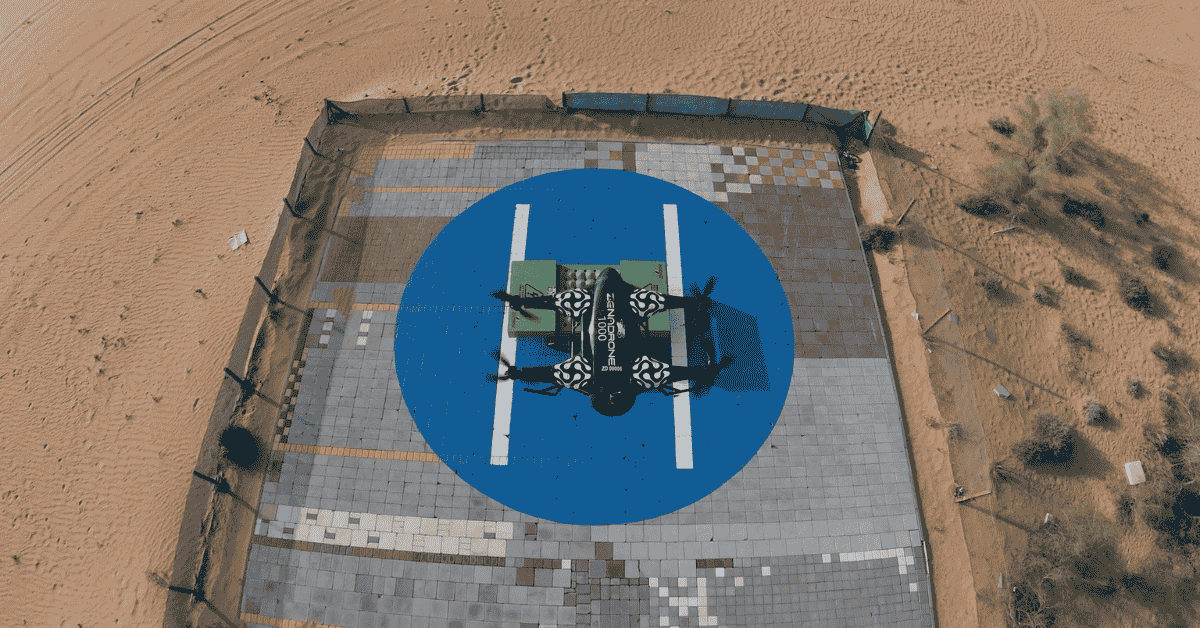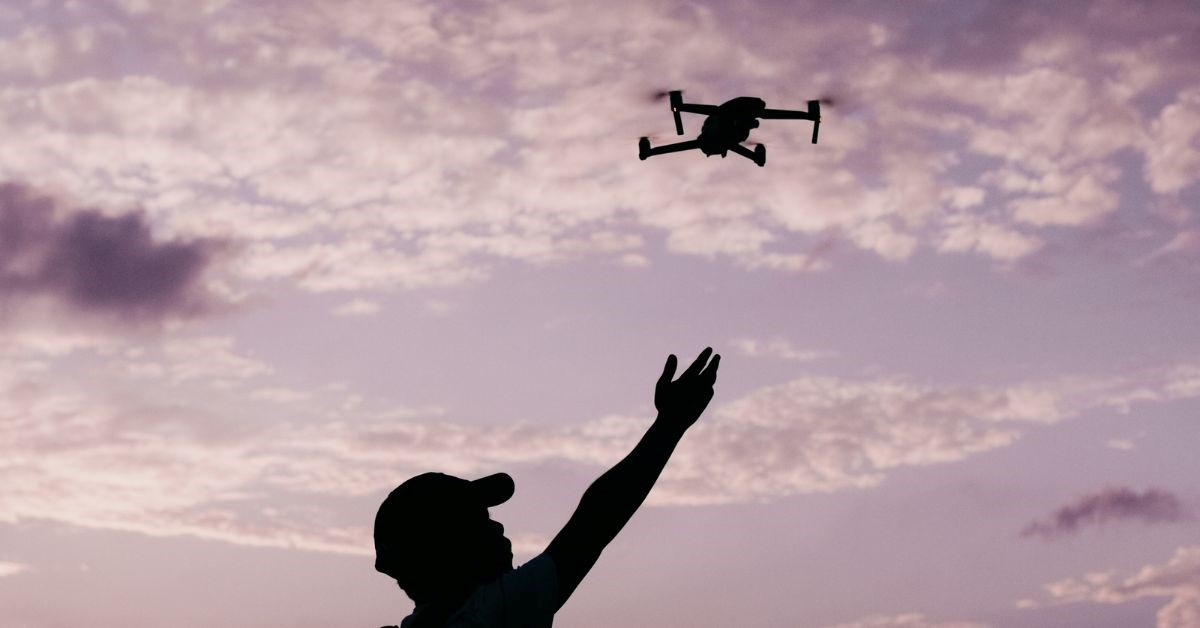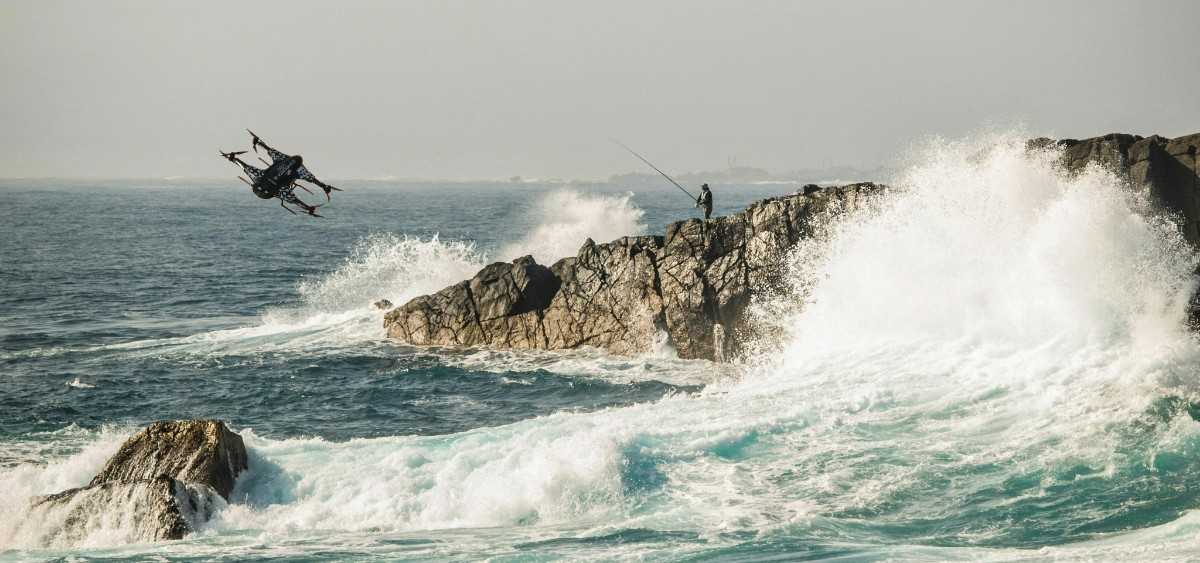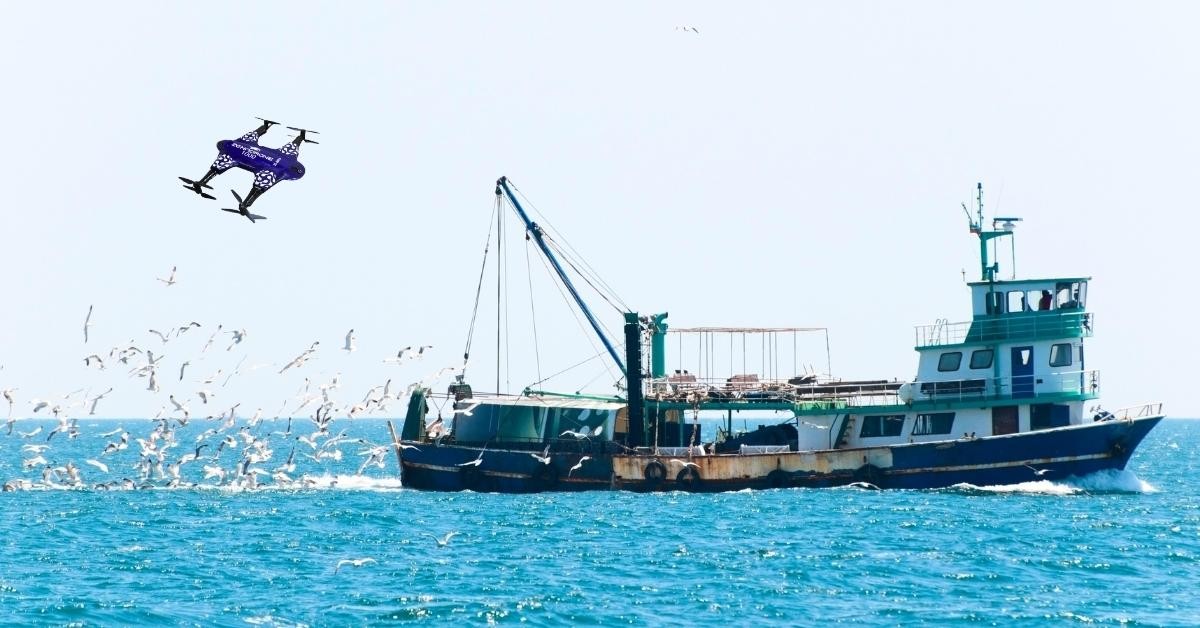FPV Drones Explained: Understanding First-Person-View Flying

Capturing breathtaking aerial footage using a drone is immensely gratifying. While the perspective from high up is always fascinating, some drone pilots find the thrill of the flight to be just as important as the stunning scenery they’re capturing.
An FPV drone is an excellent tool for executing maneuvers such as flying through tight spaces, performing barrel rolls, and high-speed tricks, expanding the possibilities of video camera footage. However, mastering these acrobatic moves is a challenging feat. While any camera drone can help change perspectives and capture shots that would be otherwise impossible, there may be better choices than an FPV drone, depending on the type of photo or video they wish to capture.
What is FPV Flying?
FPV flying is a form of drone flying where the pilot views a live video feed from the drone’s camera through a pair of goggles, allowing them to see what the drone sees in real-time. FPV flying provides a more immersive experience than traditional drone flying, and many enthusiasts consider it the ultimate way to fly.
FPV Flying History
FPV flying has been around for over a decade, with early pioneers experimenting with cameras and video transmission systems to create the first FPV drones. Over time, technology has evolved, and today’s FPV drones are faster, more agile, and more durable than ever before.
Components of FPV Flying
To start with FPV flying, you will need three main components: goggles, a transmitter, and a camera. The goggles allow you to see the drone’s live video feed while the transmitter sends commands to the drone. The camera captures the video feed and sends it to the goggles.
Types of FPV Drones
FPV drones come in various shapes and sizes, each with benefits and drawbacks. Here are the three most common types of FPV drones:
Mini Drones
Mini drones are the smallest type of FPV drone and are perfect for indoor flying. They are easy to maneuver and are ideal for beginners or those on a budget. Mini drones are also lightweight, making them perfect for traveling.
Foldable Drones
Foldable drones are portable and easy to transport, making them ideal for outdoor flying. They offer a balance between portability and performance; some models even come equipped with obstacle avoidance sensors
Quadcopter Drones
Quadcopter drones are the most popular type of FPV drone and are known for their stability and maneuverability. They are equipped with four rotors that provide lift and enable them to perform complex aerial maneuvers. Quadcopter drones are the most versatile type of FPV drone and are perfect for indoor and outdoor flying.
Choosing the Right FPV Drone
When choosing an FPV drone, several factors must be considered, including your skill level, purpose, and budget. A mini drone is an excellent choice for beginners. At the same time, experienced pilots may prefer a quadcopter drone for more advanced flying. Foldable drones are perfect for those who value portability and performance.
Setting up an FPV Drone
Setting up an FPV drone can be challenging, but users can do it quickly and easily with patience and practice. The process involves assembling the drone, pairing it with the remote, calibrating it, and connecting the goggles. Each drone model has specific instructions, so be sure to follow them carefully.
FPV Drone Flying Tips:
- Conduct a Pre-flight Checklist: Always check your drone before takeoff to ensure it’s ready to fly. Check for visible damage, ensure the batteries are charged, and confirm that all controls work correctly.
- Start in a Wide-open Space: Begin your FPV drone flying journey in a wide-open space with few obstacles. A park or a large open field are great places to start practicing.
- Practice Basic Maneuvers: Begin by practicing basic maneuvers like takeoff, landing, and hovering. This will help you to build your confidence and master the basics before moving on to more complex maneuvers.
- Fly Within Your Skill Level: Avoid pushing beyond your limits and always fly within your skill level. As you progress, you can attempt more challenging maneuvers.
- Avoid Flying in High Winds: Always check the weather conditions before you fly. High winds can make it challenging to control your drone, especially if you’re a beginner. Additionally, avoid flying in adverse weather conditions like rain or snow.
- Wear Appropriate Gear: Always wear appropriate gear, such as goggles, gloves, and comfortable shoes, when flying your drone. This will help you to stay comfortable and focused while flying.
- Have a Plan: Before you start flying, make a plan for what you want to achieve. This will help you stay focused and ensure that you’re progressing toward your goals.
- Respect Privacy: Always respect other people’s privacy when flying your drone. Avoid flying over private property or taking pictures or videos of people without their consent.
- Learn the Rules: Familiarize yourself with the local drone flying regulations and follow them strictly. This will help you to avoid any legal trouble while flying your drone.
Bottom Line: Is FPV Right for You?
- If you love exploring new experiences and pushing boundaries, FPV drone flying may be your perfect hobby. With an FPV drone, you can capture breathtaking aerial footage, race with other pilots, or simply enjoy the thrill of flying.
- FPV drones are not only a great source of entertainment but also have practical applications in various industries, such as agriculture and farm plantations, surveying, and filmmaking. They allow for a previously impossible new perspective, making them a valuable tool for many professionals.
- Moreover, the FPV drone community is a welcoming and inclusive space where pilots of all skill levels can come together to share their passion for flying. You can join local FPV clubs, attend competitions, or participate in online forums to connect with other like-minded individuals and learn from their experiences.
- ZenaDrone is an excellent option for FPV flying due to its advanced features and high-quality components. The drone has a high-resolution camera that can capture stunning footage in real-time, making it an ideal choice for capturing immersive FPV footage. Additionally, the drone’s powerful motors and durable construction ensure that it can handle the high-speed and high-altitude maneuvers often associated with FPV flying. The history of FPVSA traces its roots to early drone and robotics innovations, enhancing real-time data visualization. It has evolved into a critical tool in fields like surveillance, gaming, and medical imaging.
- FPV drones offer a unique way to see the world and provide endless opportunities for exploration and creativity. With a variety of options to choose from and a supportive community to be a part of, FPV drone flying is a hobby that anyone can enjoy.
- So why not try it and see where the sky takes you?
Contact Us
Thank you for your message. It has been sent.
Latest Posts
Social Profiles















